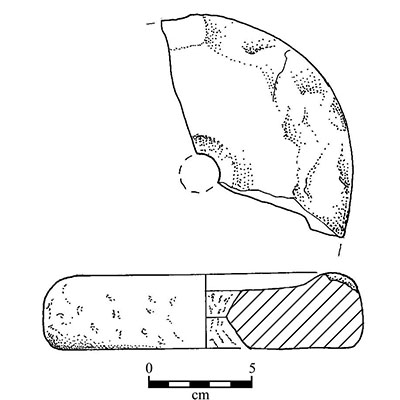


Ashqelon Barnea
Ashqelon Barnea is an Early Bronze Age I site located in the southern coastal Mediterranean plain. Excavations at the site uncovered a wealth of architecture, burials and finds. Most notably, there is evidence for extensive metal working. In tandem, a large ground stone tools assemblage was identified. The includes many upper and lower grinding stones, vessels and spindle whorls as well as some pestles, hammerstones, grooved items, perforated items, maceheads and even potters’ wheels. While some local raw materials were used to produce these tools (limestone, sandstone and kurkar), overwhelmingly, they were made from non-vesicular basalt, with this preference most notable among the vessels and spindle whorls.
Relevant publications:
Rosenberg, D., and Golani, A. 2012. Groundstone tools of a ‘coppersmiths’ community – Understanding stone-related aspects of the Early Bronze Age site of Ashqelon Barnea. Journal of Mediterranean Archaeology 25(1): 27–51.
Rosenberg, D., and Chasan, R. 2018. The characteristics and significance of prestige goods during the Early Bronze Age period of the southern Levant: The particular case of the four-handled basalt vessels phenomenon. Quaternary International 464: 241–259.



